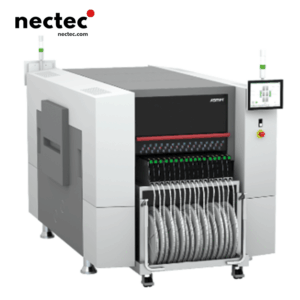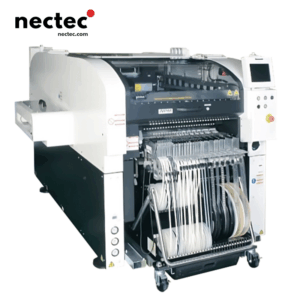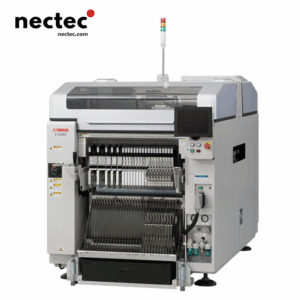In an ever-evolving manufacturing landscape, automation stands at the forefront, improving efficiency and precision in various processes. One of the most significant advancements in this arena is the development of máquinas pick and place. These tools have transformed how products are manipulated, assembled, and manufactured across various industries. In this blog post, we will delve into the intricacies of pick and place machines, exploring their mechanisms, benefits, applications, and future prospects.
O que são máquinas Pick and Place?
Pick and place machines are automated devices designed to handle the tasks of picking up components from one location and placing them into another. They are predominantly used in assembly lines and production environments, where they can work with a variety of items, ranging from electronic components to larger mechanical parts. The ability of these machines to operate with high precision and speed makes them an invaluable asset in modern manufacturing.
Como funcionam as máquinas Pick and Place?
The operational principle of pick and place machines is relatively straightforward, yet highly effective. Most pick and place systems utilize a robotic arm or a conveyor belt equipped with specialized grippers or suction cups that allow them to pick items. These machines typically integrate an advanced control system, which includes sensors, cameras, and sometimes machine learning algorithms, to ensure accurate positioning and movement.
During operation, the machine identifies the location of components using visual recognition technology. Once detected, the robotic arm moves to the item and securely grips it, lifting it before transferring it to the designated location—be it a conveyor belt, assembly area, or packaging unit. The efficiency of this process can significantly reduce production time and improve overall output.
Benefícios do uso de máquinas Pick and Place
Adopting pick and place machines can provide numerous advantages to manufacturers looking to streamline their operations.
- Aumento da eficiência: Automation of repetitive tasks accelerates the manufacturing process, allowing for higher production volumes without the corresponding increase in labor costs.
- Precisão aprimorada: With advanced sensors and control systems, pick and place machines can achieve precision levels that are difficult to replicate manually, reducing the risk of errors in assembly.
- Custo-efetividade: Although the initial investment in pick and place technology can be significant, the long-term savings in labor and increased throughput can lead to a quick return on investment.
- Flexibilidade: Many modern pick and place systems are designed to be versatile, capable of handling a variety of components and configurations with minimal adjustment.
- Segurança aprimorada: By automating potentially hazardous tasks, these machines can help reduce workplace injuries associated with manual handling.
Aplicações das máquinas Pick and Place
Pick and place machines have a wide range of applications across various industries. Some notable examples include:
- Fabricação de eletrônicos: Used extensively for assembling circuit boards, these machines quickly and accurately place tiny components, which are often challenging for humans to handle due to their size.
- Setor de alimentos e bebidas: Automated pick and place systems help in sorting and packing food items, ensuring consistent quality and improved hygiene standards.
- Setor farmacêutico: In drug manufacturing and packaging, accuracy and speed are crucial. Pick and place machines efficiently manage pills and packaging materials.
- Logística e armazenagem: Robotics in logistics employ pick and place technology to quickly gather products for shipment, optimizing supply chain operations.
O futuro das máquinas Pick and Place
The future of pick and place technology looks promising, with advancements continually emerging. One noteworthy trend is the integration of artificial intelligence (AI) and machine learning. As machine learning algorithms enhance the decision-making capabilities of pick and place systems, these machines will become more autonomous and adaptable, capable of learning from their environments and optimizing their operations over time.
Another exciting development is the miniaturization of components, allowing even more intricate tasks to be automated. These innovations will open doors for pick and place machines in new applications and industries, pushing the boundaries of automation further.
Desafios na implementação da tecnologia Pick and Place
Despite their many advantages, implementing pick and place machines is not without challenges. The initial setup costs can be substantial, and there may be resistance to change from the workforce accustomed to traditional methods. Additionally, the maintenance of complex machinery often requires skilled technicians, presenting a barrier for smaller operations.
Moreover, as production requirements evolve, machines need to be updated or reprogrammed, which can incur additional costs and downtime. Therefore, manufacturers must carefully assess their needs and resources before investing in this technology. Ensuring that the workforce is adequately trained and prepared for such a transition is crucial for the success of automation efforts.
Conclusão
While conclusions are often placed at the end of an article, here we wish to emphasize how pick and place machines represent a pivotal innovation in modern manufacturing. From their operational mechanics to their implications for the future of factory automation, understanding this technology is essential for businesses looking to remain competitive in a rapidly changing marketplace. As the industry continues to evolve, those who embrace automation, such as pick and place machines, will likely lead the charge into the future of efficient production.









